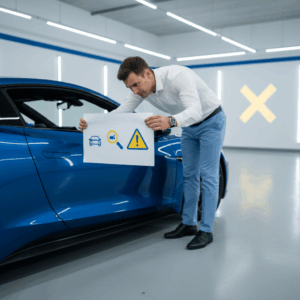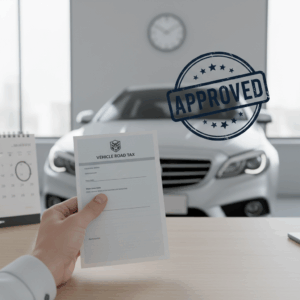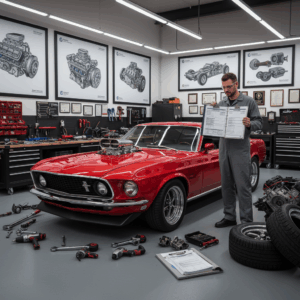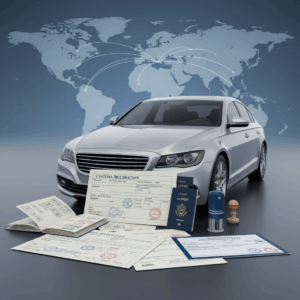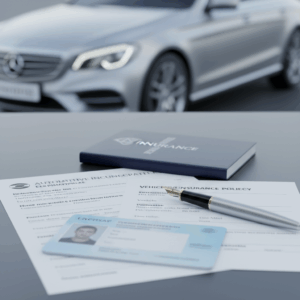Legal Responsibility in Autonomous Vehicle Accidents
Legal responsibility in accidents involving autonomous vehicles is a complex and evolving issue. The primary focus lies on identifying which party is liable for resulting damages.
Current legislation in many countries places initial responsibility on the vehicle owner, requiring mandatory liability insurance to cover damages from vehicle operation.
However, if a malfunction or defect in the autonomous driving system causes the accident, responsibility can shift towards manufacturers or software developers.
Owner Liability and Mandatory Insurance
Vehicle owners are generally liable for accidents, as they must carry mandatory liability insurance protecting third parties. This ensures victims receive compensation.
The owner’s responsibility covers damages regardless of who controlled the vehicle, emphasizing the importance of insurance compliance under existing laws.
Mandatory insurance policies create a legal safety net, though they do not absolve other parties who may be at fault due to system defects or errors.
Manufacturer and Software Developer Accountability
If an accident results from a defect in the autonomous system, manufacturers can be held liable for failing to ensure vehicle safety and proper functioning.
Software developers may also bear responsibility when programming errors or algorithmic faults contribute to accidents, highlighting product liability concerns.
Establishing accountability involves investigating system logs and technical data to determine whether a defect or malfunction caused the incident.
Driver’s Role in Semi-Autonomous Vehicle Accidents
Semi-autonomous vehicles require drivers to maintain a certain level of control, making driver responsibility critical in accident scenarios. The driver’s role is still essential despite technological assistance.
These vehicles rely on both human oversight and advanced systems, meaning drivers must remain attentive and ready to intervene when necessary to prevent accidents.
Understanding the driver’s obligations and the implications of their actions is key in assigning liability in semi-autonomous vehicle incidents.
Driver Control and Attention Requirements
Drivers must stay engaged and monitor the vehicle’s performance, as semi-autonomous systems do not operate independently at all times. Manual intervention is expected when prompted.
Failure to pay attention or respond to alerts may lead to accidents, making the driver accountable for neglecting their control responsibilities.
Regulations emphasize the need for continuous driver vigilance to complement autonomous features, maintaining road safety and reducing accident risk.
Impact of Driver Negligence on Liability
Negligence, such as ignoring warnings or being distracted, significantly affects liability in crashes involving semi-autonomous vehicles. Drivers can be held responsible if they fail to act appropriately.
Legal frameworks often assess whether the driver met the standard of care expected when using autonomous assistance technologies to determine fault.
Driver negligence can shift liability away from manufacturers, underscoring the importance of clear communication about system limitations and driver duties.
Software Errors and Developer Responsibility
Despite driver involvement, software failures can directly contribute to accidents, raising questions about developer accountability in semi-autonomous vehicle incidents.
Developers must ensure algorithms reliably support driver needs and safety; faults or bugs compromising control may increase their liability.
Investigating crash data and system logs helps clarify whether software errors played a role, guiding legal decisions on responsibility distribution.
Challenges in Determining Liability
Determining liability in autonomous vehicle accidents presents unique challenges due to evolving technologies and unclear legal precedents worldwide. These complexities demand careful legal examination.
Current laws often fail to address the nuances of autonomous driving systems, creating regulatory gaps that complicate liability assignment. This uncertainty affects all parties involved.
Legal Precedents and Regulatory Gaps
The lack of established legal precedents concerning autonomous vehicles leaves courts with few guidelines when assigning fault in accidents involving these technologies.
Many jurisdictions have yet to update regulations specifically for autonomous vehicle liability, resulting in inconsistent interpretations and enforcement challenges.
These regulatory gaps hinder clear accountability, as traditional traffic laws do not fully encompass the responsibilities of automated systems and human operators.
Use of Data Recording Technologies
Data recording devices play a critical role in resolving liability issues by capturing detailed information on vehicle behavior and system status during incidents.
Event data recorders (EDRs) and onboard sensors provide objective evidence, enabling authorities to reconstruct accidents and assess fault with greater accuracy.
Such technologies bridge the gap between uncertain legal frameworks and technological intricacies, supporting fair decisions in complex cases.
Future Directions in Autonomous Vehicle Liability
As autonomous vehicle technology advances, regulations and standards continue to evolve to address liability challenges. Governments and agencies are actively working on frameworks.
These emerging rules aim to clarify fault determination, insurance requirements, and responsibilities among owners, manufacturers, and software developers, improving legal certainty.
Innovations in data collection and analysis promise better tools for accurately assigning liability, supporting fair outcomes in increasingly complex accident cases.
Emerging Regulations and Standards
New regulations focus on establishing clear liability guidelines that reflect autonomous vehicle capabilities and risks, while balancing stakeholder interests fairly.
International standards are also developing to harmonize safety requirements, testing procedures, and liability frameworks across jurisdictions for consistency.
Legislators prioritize adapting insurance models to accommodate evolving technologies, ensuring victims are protected regardless of fault complexities.
Technological Advances to Establish Fault
Advanced data recording technologies, such as event data recorders and AI diagnostics, provide detailed insights into vehicle behavior before and during accidents.
These tools help reconstruct incidents with precision, enabling courts and insurers to identify the responsible party based on objective evidence.
The Role of Blockchain and AI
Emerging methods like blockchain ensure data security and immutability, preventing tampering in fault investigation processes.
Additionally, AI technologies analyze complex datasets to detect subtle causative factors, enhancing liability assessments and improving legal outcomes.


